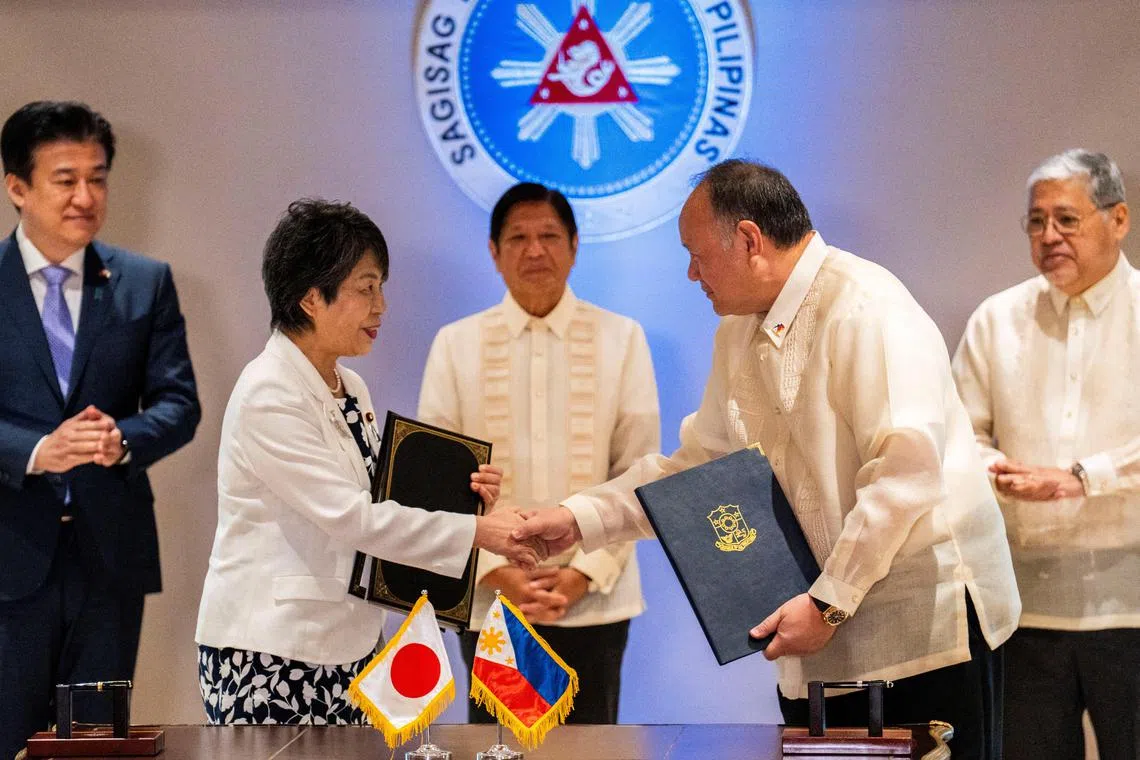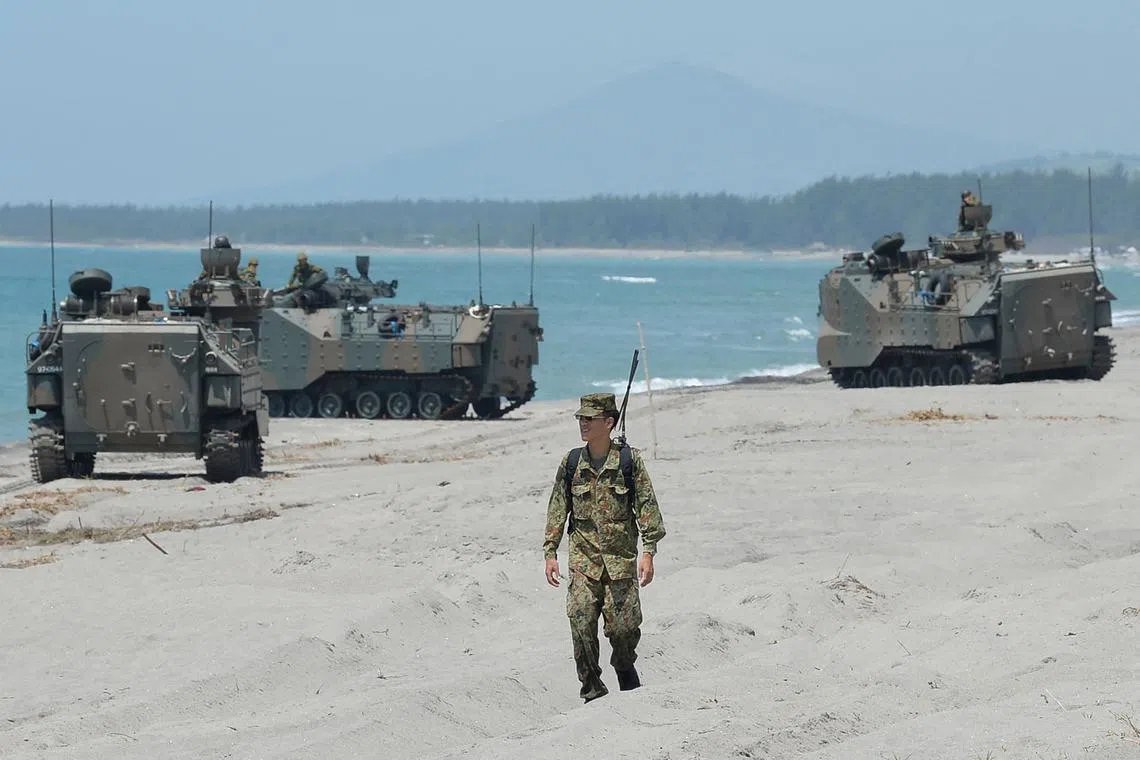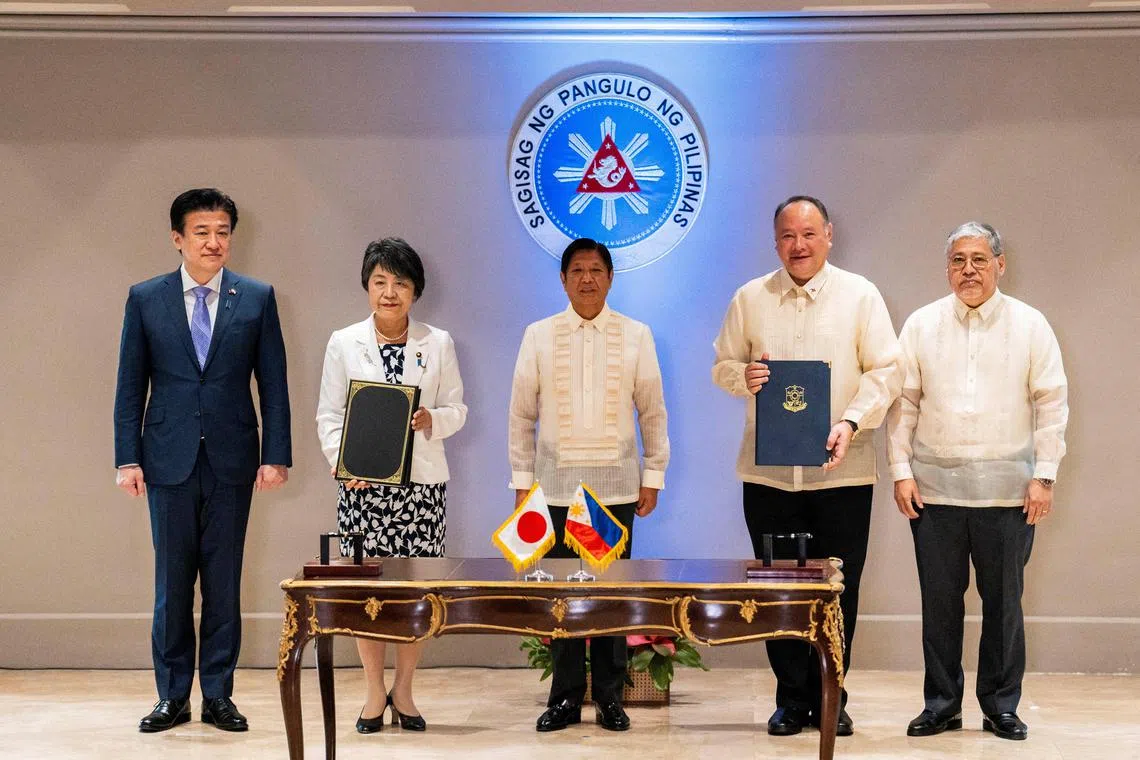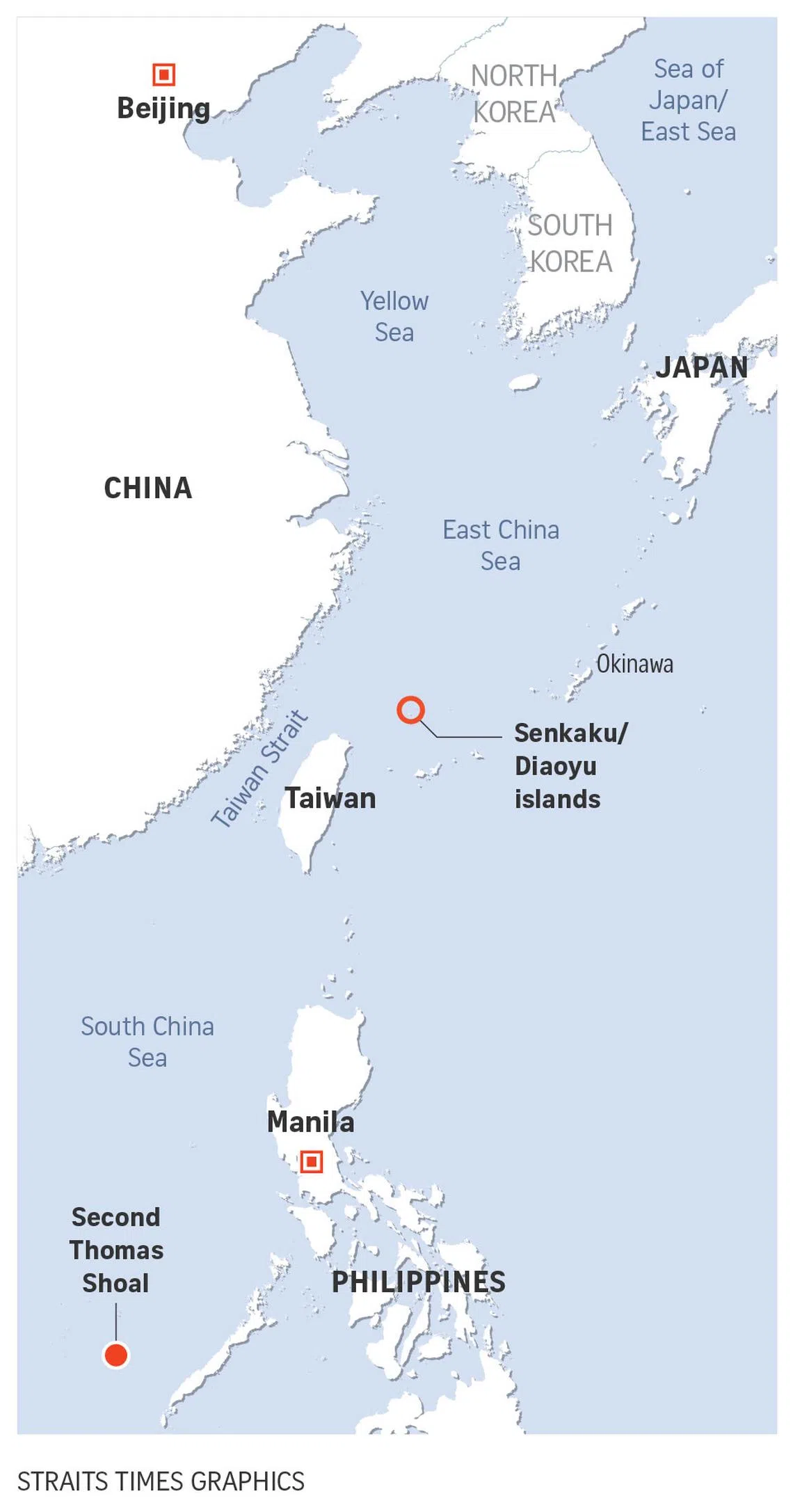The Philippines, Japan sign landmark defence deal in move to counter China
Sign up now: Get insights on Asia's fast-moving developments

Japan’s Foreign Minister Yoko Kamikawa (left) and the Philippines’ Defence Minister Gilberto Teodoro shaking hands after signing the reciprocal access agreement.
PHOTO: REUTERS
Follow topic:
MANILA – The Philippines and Japan on July 8 signed a landmark defence deal that allows both nations to hold joint military drills in each other’s territories
Philippine President Ferdinand Marcos Jr witnessed the signing of the reciprocal access agreement (RAA) at the presidential palace in Manila after meeting Japanese Foreign Minister Yoko Kamikawa and Defence Minister Minoru Kihara.
“Your presence here increases our confidence and the importance that the Japanese government puts on these extremely important agreements that we have. And I’m very glad that we have come to this day,” Mr Marcos told the Japanese officials.
Mr Kihara said that the RAA represents the “cooperative relationship” between Japan and the Philippines, and “reinforces the effectiveness of our defence cooperation”.
The two Japanese officials then met their Philippine counterparts, Foreign Secretary Enrique Manalo and Defence Secretary Gilberto Teodoro Jr, on the afternoon of July 8 to discuss their current bilateral security environment, as well as regional issues involving the East and South China seas, Taiwan and the Korean peninsula.
The RAA lays out guidelines on the deployment of soldiers and the conduct of joint military exercises in each of the two countries’ territories. This is the same level of military access to the Philippines that the US currently enjoys through its own visiting forces agreement (VFA) with Manila.
This also makes the Philippines the third country to forge an RAA with Tokyo, following Australia and Britain.
Before the RAA, bilateral military engagements between Manila and Tokyo were limited to humanitarian and disaster relief operations, as well as expert exchanges.
The defence pact, however, will be finalised only when the RAA is ratified by the Philippine Senate and Japan’s Diet.
Asked about the RAA at a press briefing in Beijing, Chinese Foreign Ministry spokesman Lin Jian said the Asia-Pacific region does not need military blocs and should not provoke confrontation between different camps that encourage a new Cold War.
“During World War II, Japan was responsible for invasion and colonial rule of South-east Asian countries, including the Philippines,” said Mr Lin. “Japan should seriously reflect on its history of aggression and be cautious in words and deeds in the field of military security”.
Negotiations for the RAA have been expedited in the past two years. Talks about the Philippines working on a defence deal with Japan similar to its VFA with Washington first started when Mr Marcos visited Japan in February 2023.
Nine months later, formal negotiations on the RAA started when Japanese Prime Minister Fumio Kishida visited Manila.
China’s growing influence in the Indo-Pacific region has been pushing the US, Japan and the Philippines towards trilateral security cooperation.
Japan and the US once colonised the Philippines, but the two countries are now among Manila’s closest military allies as it counters a more assertive Beijing in the South China Sea.
The three nations’ naval forces conducted joint drills in the disputed waterway in April.
Japan has no claim over these waters, but it has a separate territorial dispute with Beijing over small, uninhabited islands in the East China Sea that Tokyo calls Senkaku and Beijing calls Diaoyu.

This file photo taken on Oct 6, 2018, shows a member of Japan’s Ground Self-Defence Force during a joint amphibious landing exercise with Philippine and US troops in the Philippines.
PHOTO: AFP
The Philippines and Japan are also located near Taiwan, the self-ruled democratic island that Beijing considers part of China.
During the ministers’ press briefing in the afternoon, Ms Kamikawa said the RAA does not mean to target any particular country, but rather is aimed at strengthening relations between Manila and Tokyo, as well as promoting peace in the Indo-Pacific.
“This is something crucial for the peace and prosperity of the region, including Japan and the Philippines. It will be conducive to maintaining and strengthening an open, international order, based upon rule of law,” she said.
The Philippine and Japanese militaries both stand to gain from the signing of the RAA, said political analyst Robin Garcia of Manila-based public affairs firm WR Advisory Group.
He said the defence pact paves the way for Philippine and Japanese troops to harmonise strategies in preparing for potential conflicts in three areas where they are both strategic actors: the East and South China seas, and the Taiwan Strait.
“This will definitely be a factor in Beijing’s calculation of the strategic environment in the Indo-Pacific,” Dr Garcia told The Straits Times.

(From left) Japanese Defence Minister Minoru Kihara, Japanese Foreign Minister Yoko Kamikawa, Philippine President Ferdinand Marcos Jr, Philippine Defence Minister Gilberto Teodoro, and Philippine Foreign Minister Enrique Manalo at the Malacanang Palace in Manila, the Philippines, on July 8.
PHOTO: REUTERS
The RAA is also particularly significant for Manila, which is now hedging its strategy in the South China Sea territorial dispute following the chaotic June 17 skirmish between the Chinese coast guard and Philippine naval forces at Second Thomas Shoal that ended with a Filipino serviceman losing his thumb.
Citing the June 17 incident, Mr Kihara said Japan was “seriously concerned over repeated actions which obstruct freedom of navigation and increased regional tensions, including recent dangerous actions that resulted in damage to the Filipino vessel and injury to the crew on board” in the South China Sea.
The defence deal boosts Mr Marcos’ ongoing push to broaden his country’s security cooperation with like-minded allies as Beijing becomes more aggressive in the South China Sea, said political analyst Dindo Manhit of Manila-based think-tank Stratbase ADR Institute.
“This RAA is a step forward for the Philippines becoming stronger militarily through partnerships, and it makes us a stronger power within the region,” he told ST.
Asked if the Philippines has any plans of crafting a mutual defence treaty (MTD) with Japan similar to what Manila currently has with the US, Philippine Foreign Secretary Manalo said it would depend on how circumstances develop in the next months.
Under the MTD, the US has committed to come to the Philippines’ aid in the event of an armed attack by a foreign nation, and vice versa.
“Whether we will need to expand it to cover other areas really depends on the situation that develops... But what’s important is... what the RAA has done, that it could serve as a process for stability in the region,” he said.



